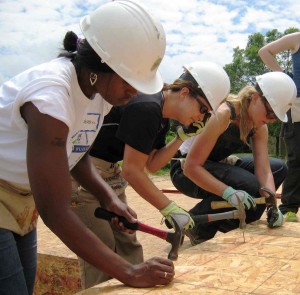
Have you ever heard the saying “strike while the iron is hot”? Practically speaking, it’s very good advice if you ever find yourself in the metal-working industry–but more commonly, this little idiom is used to advocate “taking action on an opportunity promptly while favorable conditions exist” (cue tagline: helping pubescent teenagers secure prom dates since 1811). Also applicable, however, to volunteers. You, mighty volunteer coordinator, now understand your appeal as an organization, you’ve identified your “ideal volunteers” and catered your marketing strategy to reach them effectively.
In other words, the iron is hot.
It’s time to strike. It’s time to get the volunteer. The stars have aligned! You’ve piqued the interest of the right people for your organization, and your organization is the right cause for them. Her name is Martha, and she’s free on Thursday afternoon. His name is Dave, and he’s looking for a way to give back this weekend. You want them, you need them. So sign them up. Just remember one rule.
Step 4: Keep It Simple, Stupid
The shake-down from prospective volunteers to actual volunteers dictates that some will drop off in the sign-up process–so the easier, simpler and quicker you can make that process, the more volunteers you’ll get.
Volunteers are already donating their time to work for your organization–don’t make them donate extraneous time to understanding a lengthy and confusing volunteer sign-up/registration. By automating your volunteer coordination efforts through VolunteerLocal, you can direct your volunteers to the sign-up page from your website. It’s fast, it’s easy, and it allows them to sign up while they are still interested. We can even customize your  sign-up page to match the look and feel of your existing website. This means your volunteers will experience a user-friendly and familiar interface that will enhance the navigability of their unique sign-up experience. The simpler it is for your volunteers to register and confirm their shifts through your organization or event, the happier they’ll be–and it’s more likely that they are to come back and do it again.
sign-up page to match the look and feel of your existing website. This means your volunteers will experience a user-friendly and familiar interface that will enhance the navigability of their unique sign-up experience. The simpler it is for your volunteers to register and confirm their shifts through your organization or event, the happier they’ll be–and it’s more likely that they are to come back and do it again.





